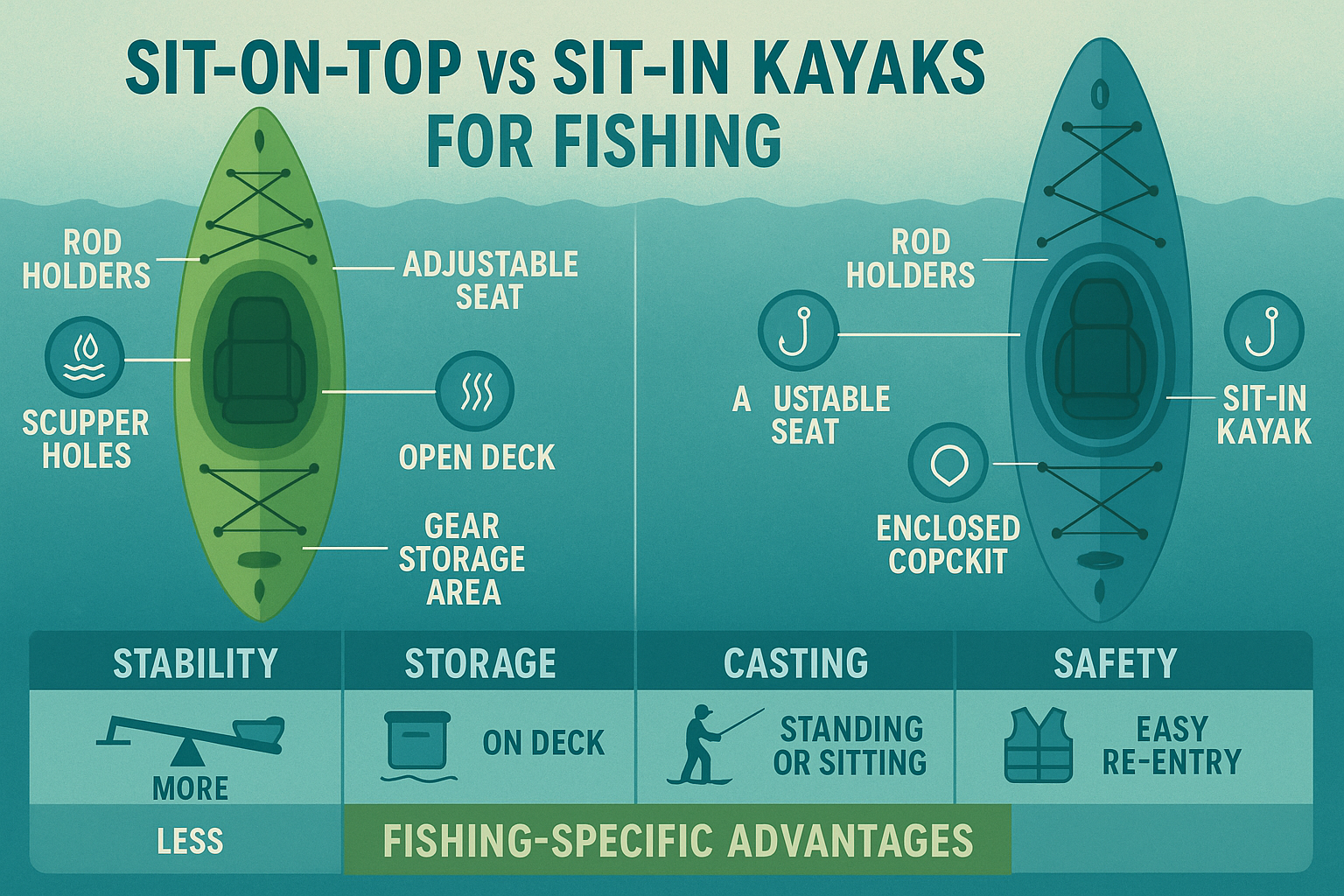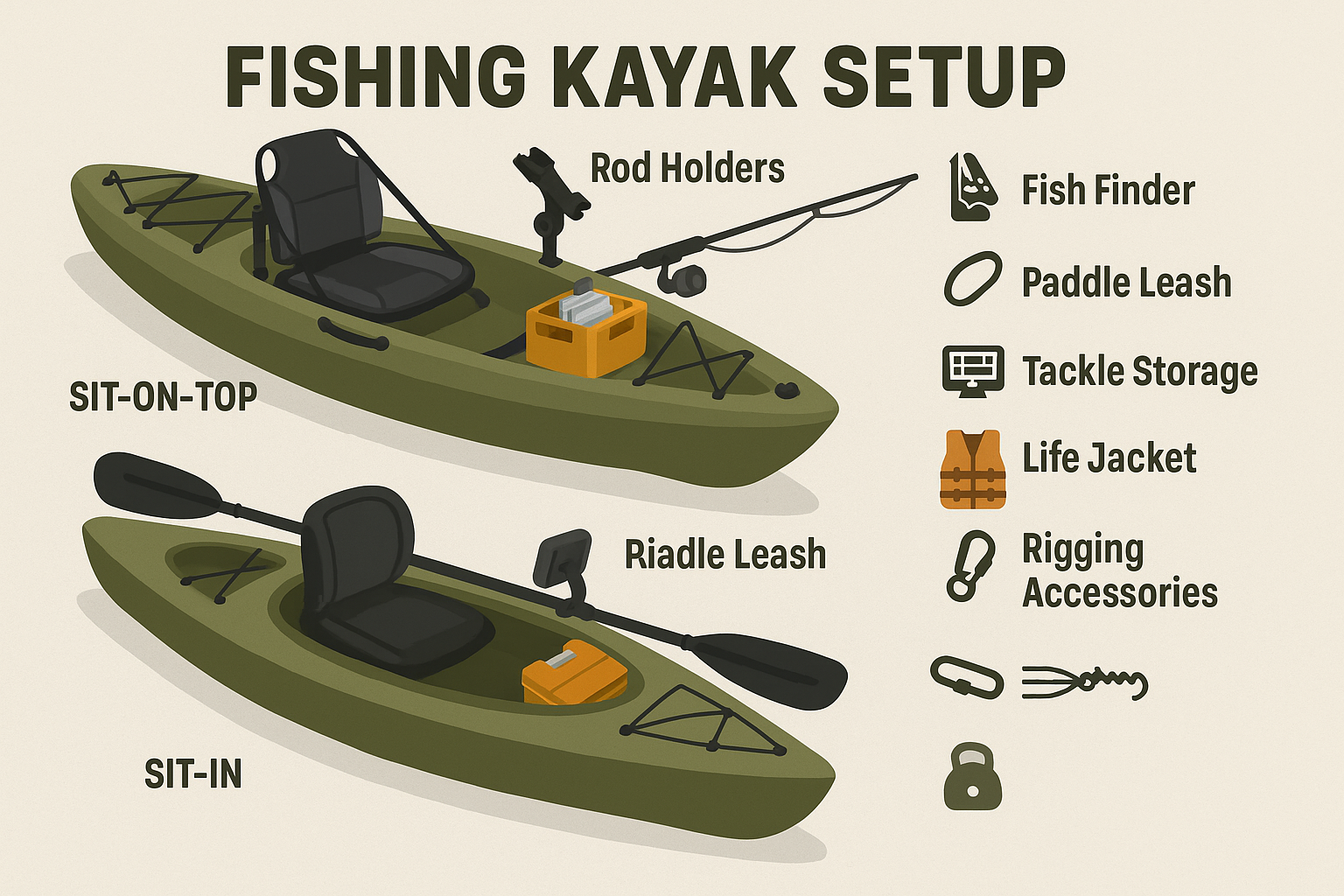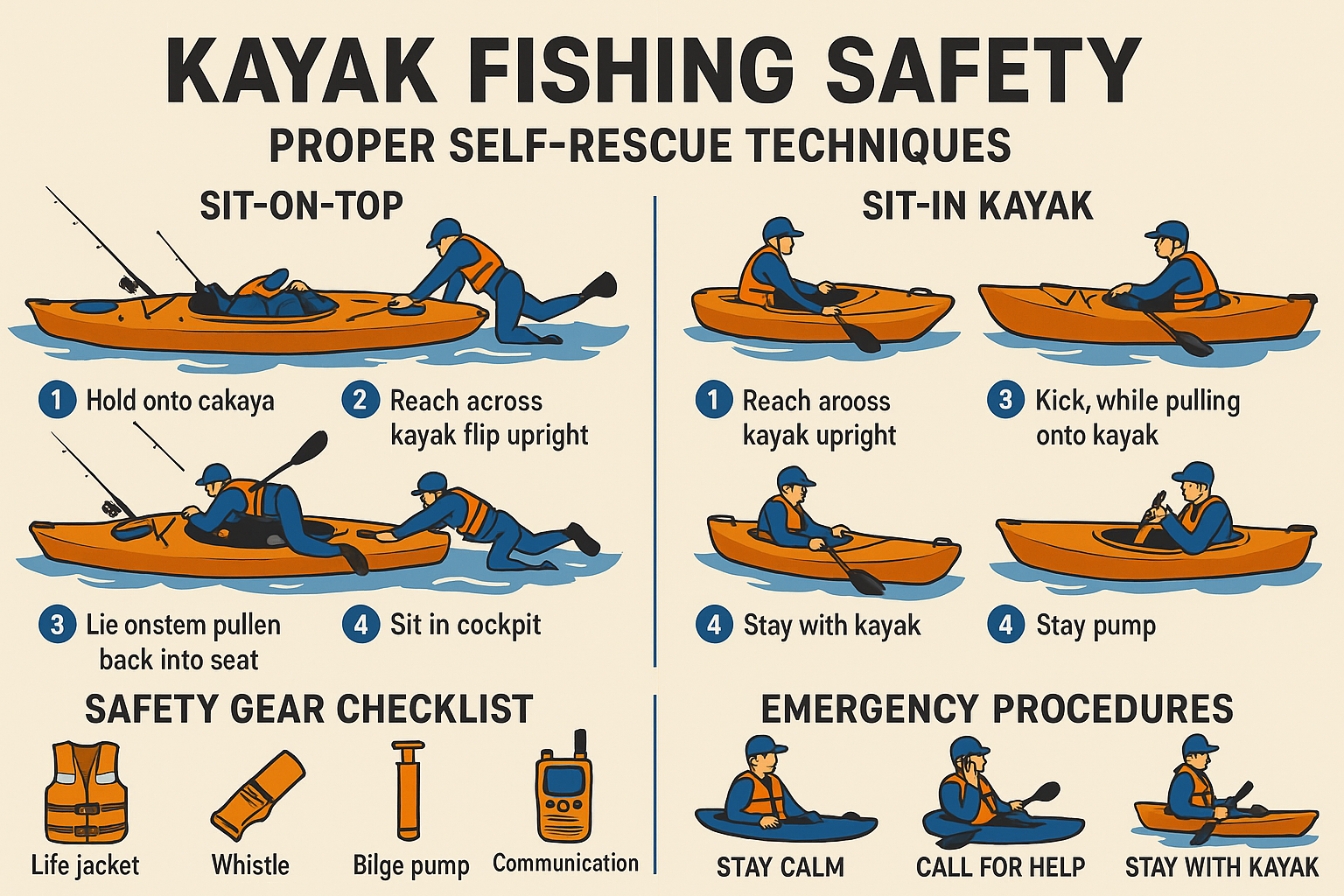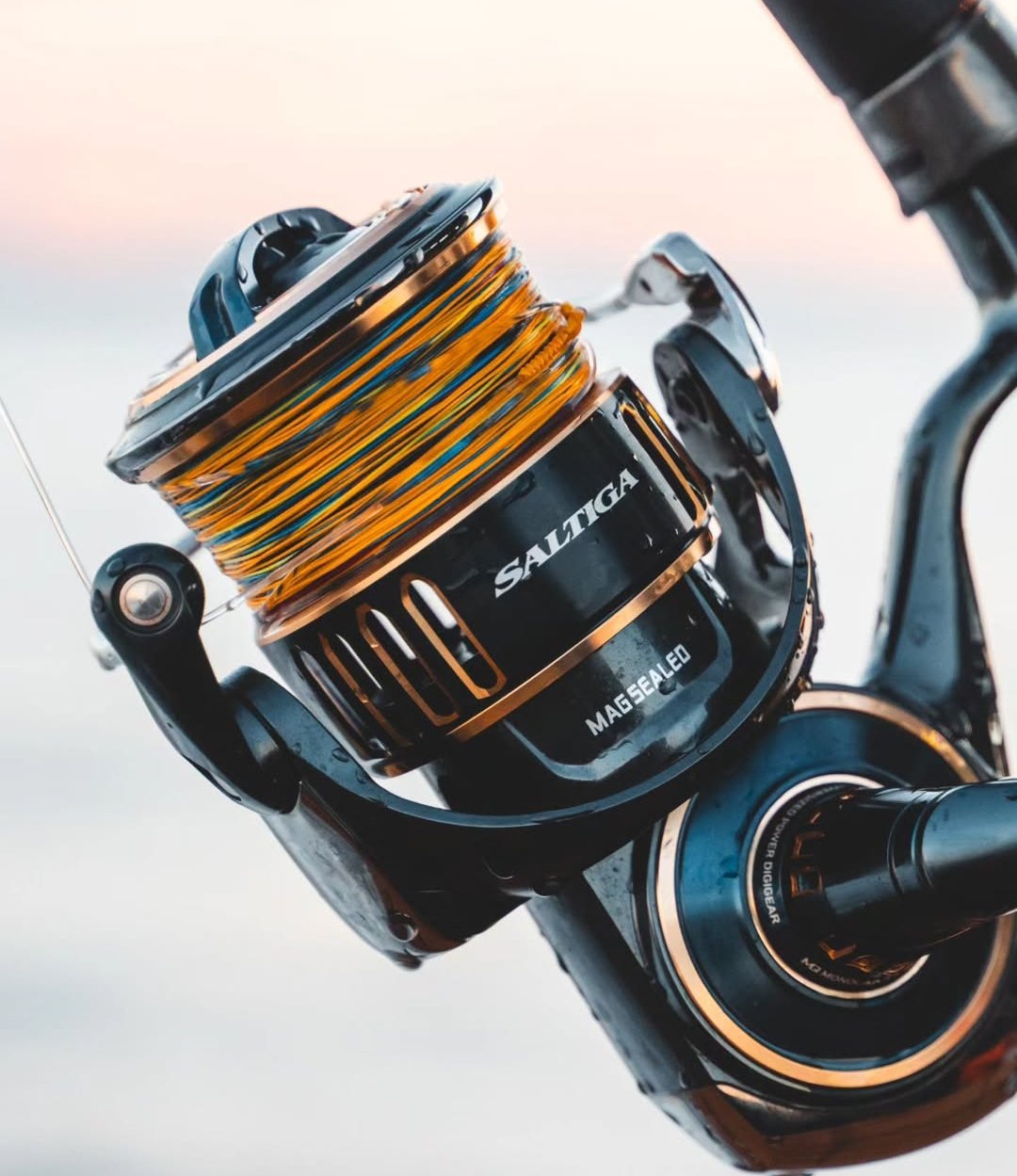After testing over 50 fishing kayaks across both styles, I’ve discovered that your choice between sit-on and sit-in can make or break your fishing success.
The confusion between kayak styles has cost countless anglers both fish and money. This comprehensive guide provides a clear decision framework based on fishing style, experience level, and water conditions.
Drawing from extensive testing experience and professional angler insights, we’ll eliminate the guesswork and help you choose the perfect kayak for maximum catches.
Key Insights from Expert Analysis
- Sit-on-top kayaks offer easier entry/exit and self-draining capability
- Sit-in kayaks provide better protection and paddling efficiency
- Width and seat height are crucial factors for stability
- Choice depends on fishing location and personal preferences
The Fundamental Difference: Design and Fishing Implications
Sit-On vs Sit-In Kayak Design Comparison

Comprehensive visual comparison of sit-on-top vs sit-in kayak designs highlighting key fishing-specific features
Sit-On-Top Design Advantages
- Self-Draining: Scupper holes allow water to drain automatically
- Mobility: Freedom to move around and change positions
- Easy Recovery: Simple to get back on after falling off
- Sight Fishing: Elevated position for better water visibility
- Gear Access: Easy reach to all equipment while fishing
Sit-In Design Benefits
- Efficiency: Lower center of gravity for better paddling performance
- Protection: Cockpit shields from wind, waves, and cold
- Lighter Weight: Typically 10-15 pounds lighter than comparable sit-on-top
- Control: Better connection to kayak through thigh braces
- Secure Storage: Protected compartments for valuable gear
How Design Affects Fishing Performance
Weight Distribution
Sit-on-top kayaks have higher center of gravity, requiring wider hulls for stability. Sit-in kayaks sit lower, allowing narrower, faster designs.
Stealth Factor
Sit-in kayaks offer lower profile for approaching spooky fish. Sit-on-top kayaks provide elevated viewing for sight fishing.
Weather Response
Sit-in kayaks excel in cold conditions with spray skirts. Sit-on-top kayaks handle rough water with self-bailing design.
Fishing Performance Comparison: Casting, Landing, and Maneuvering
Casting Comfort & Range
Sit-On-Top Advantage
360-degree casting freedom with ability to turn in seat. Standing capability for long-distance casts and sight fishing.
Sit-In Performance
More stable platform for precision casting. Lower position reduces wind resistance but limits casting angles.
Fighting & Landing Fish
Sit-On-Top Advantage
Freedom to use legs for bracing. Easy access to net and gaff. Can lean over sides for landing large fish.
Sit-In Performance
Better leverage through thigh braces. More secure feeling when fighting powerful fish. Lower position aids in control.
Positioning & Maneuvering
Sit-On-Top Advantage
Paddle-free positioning with legs. Quick direction changes. Easy drift control with body positioning.
Sit-In Performance
Superior tracking and speed. Better performance in currents. Efficient long-distance paddling to fishing spots.
Real-World Fishing Scenarios
Bass Fishing in Shallow Cover
Sit-on-top kayaks excel in shallow water bass fishing where precise boat positioning and multiple casting angles are crucial. The ability to stand provides better sight lines for identifying structure and cover.
Offshore Saltwater Fishing
Sit-in kayaks perform better in offshore conditions with their superior tracking and wave-cutting ability. The lower profile reduces wind resistance during long paddles to fishing grounds.
Storage and Gear Organization: Which Handles Fishing Equipment Better?
Fishing Kayak Setup & Accessories

Complete guide to essential fishing kayak accessories and optimal setup configurations
Sit-On-Top Storage Solutions
Tackle Storage & Accessibility
- Large tank wells for crates and tackle boxes
- Bungee deck storage for frequently used items
- Easy access to all gear while fishing
- Exposure to elements and potential loss
Rod Holder Configurations

- Multiple flush-mount rod holders
- Adjustable rod holders on gear tracks
- Horizontal rod storage in hull channels
Electronics & Accessories
- Easy fish finder installation
- Gear track systems for customization
- Accessible battery compartments
Sit-In Storage Solutions
Tackle Storage & Accessibility
- Sealed compartments protect valuable gear
- Cockpit-accessible storage areas
- Deck bungees for quick-access items
- Limited storage capacity
Rod Holder Configurations
- Cockpit-mounted rod holders
- Deck-mounted options
- Fewer rod holder options
- Limited by cockpit space
Electronics & Accessories
- Protected electronics compartments
- Clean cable routing
- More complex installation
Fishing Gear Capacity Comparison
| Storage Type | Sit-On-Top | Sit-In | Winner |
|---|---|---|---|
| Tackle Box Storage | Large tank wells, milk crates | Limited cockpit space | Sit-On-Top |
| Rod Storage | 6-8 rod holders typical | 2-4 rod holders typical | Sit-On-Top |
| Cooler/Catch Storage | Large coolers fit easily | Small coolers only | Sit-On-Top |
| Electronics Protection | Exposed to elements | Protected compartments | Sit-In |
| Gear Security | Must be secured well | Sealed compartments | Sit-In |
Essential Fishing Kayak Accessories
Comfort and Ergonomics: Long Days on the Water
Seating Position & Support
Sit-On-Top Comfort
- Adjustable seat height and angle
- Freedom to change positions
- Leg stretching capability
- Less back support from kayak structure
Sit-In Comfort
- Thigh braces provide support
- Better paddling posture
- Efficient body mechanics
- Confined feeling for some paddlers
Mobility & Stretching Options
Sit-On-Top Mobility
- Stand and stretch during breaks
- Sit cross-legged or sideways
- Dangle feet in water
- Easy bathroom breaks
Sit-In Mobility
- Adjustable footrests
- Some knee flexing possible
- Limited position changes
- Must exit for stretching
Extended Fishing Session Comfort
2-4 Hours
Both styles comfortable with proper setup
4-8 Hours
Sit-on-top advantage for position changes
8+ Hours
Depends on individual preference and conditions
Weather Protection and Seasonal Fishing
Cold Weather Fishing Performance
Sit-In Advantages
- Cockpit protection from wind
- Spray skirt keeps water out
- Body heat retained in enclosed space
- Lower body stays drier
Sit-On-Top Challenges
- Exposed to elements
- Water splashing from scuppers
- Requires more protective clothing
Hot Weather & Sun Protection
Sit-On-Top Advantages
- Self-bailing keeps you cooler
- Better air circulation
- Easy cooling dips
- Feet can dangle in water
Sit-In Considerations
- Cockpit can get hot
- Limited cooling options
- Legs protected from sun
Essential Weather Gear by Season
Winter Fishing
- Dry suit or wetsuit
- Waterproof gloves
- Thermal layers
- Spray skirt (sit-in)
Spring Fishing
- Light rain jacket
- Quick-dry pants
- Waterproof boots
- Extra clothing layers
Summer Fishing
- UV protection shirt
- Wide-brim hat
- Sunglasses
- Cooling towels
Fall Fishing
- Layered clothing
- Waterproof jacket
- Insulated boots
- Hand warmers
Safety Considerations: Stability, Recovery, and Risk Management
Kayak Fishing Safety & Self-Rescue Techniques

Essential safety protocols and self-rescue techniques for both sit-on-top and sit-in fishing kayaks
Critical Safety Reminder
Always wear a properly fitted personal flotation device (PFD) and inform someone of your fishing plans. Water temperature, weather conditions, and your swimming ability should always factor into your safety preparations.
Stability During Fishing Activities
Sit-On-Top Stability
- Higher primary stability
- Wider beam provides platform
- Standing fishing capability
- Higher center of gravity
Sit-In Stability
- Better secondary stability
- Lower center of gravity
- Thigh braces provide control
- Narrower beam can feel tippy
Self-Recovery & Emergency Procedures
Sit-On-Top Recovery
- Simple: flip upright and climb on
- No water to bail out
- Self-draining design
- Minimal rescue skills needed
Sit-In Recovery
- Requires T-rescue or roll skills
- Must empty water from cockpit
- Paddle float self-rescue possible
- More complex in rough water
Emergency Action Plans
Immediate Response
- 1. Stay calm and assess situation
- 2. Signal for help if needed
- 3. Prioritize getting back to kayak
- 4. Conserve energy
Self-Rescue Steps
- 1. Secure paddle to kayak
- 2. Position at side of kayak
- 3. Use proper re-entry technique
- 4. Get seated and oriented
Post-Rescue Actions
- 1. Check for injuries
- 2. Assess equipment status
- 3. Plan safe return to shore
- 4. Review what happened
Essential Safety Equipment
Required Safety Gear
- Coast Guard approved PFD
- Whistle attached to PFD
- Paddle leash
- Waterproof communication device
Recommended Safety Gear
- Compass or GPS device
- Basic first aid kit
- Waterproof flashlight
- Emergency water and snacks
Cost Analysis: Initial Investment and Long-Term Value
Initial Investment Comparison
| Category | Sit-On-Top | Sit-In |
|---|---|---|
| Entry Level | $400-700 | $350-600 |
| Mid-Range | $800-1,500 | $700-1,200 |
| Premium | $1,500-3,000 | $1,200-2,500 |
| Pedal Drive | $2,500-4,000 | $2,000-3,500 |
| Tournament Level | $3,000-6,000 | $2,500-5,000 |
Accessory & Setup Costs
Sit-On-Top Accessories
- Rod holders (4-6): $100-200
- Tackle storage crate: $50-100
- Fish finder: $200-800
- Anchor system: $50-150
- Seat upgrade: $100-300
- Total: $500-1,550
Sit-In Accessories
- Rod holders (2-4): $60-120
- Deck storage: $40-80
- Fish finder: $200-800
- Spray skirt: $80-150
- Paddle float: $30-50
- Total: $410-1,200
5-Year Total Cost of Ownership
Budget Setup
$1,200-2,000
Entry kayak + basic accessories
Serious Angler
$2,500-4,000
Mid-range kayak + full accessories
Tournament Ready
$4,000-8,000
Premium kayak + tournament gear
Resale Value & Longevity
Factors Affecting Resale Value
- Brand reputation and demand
- Maintenance and care
- Included accessories
- Age and model updates
Typical Resale Retention
- Year 1: 70-80% of original value
- Year 2: 60-70% of original value
- Year 3: 50-60% of original value
- Year 5: 40-50% of original value
Best Sit-On Kayaks for Fishing (2025 Recommendations)

Hobie Mirage Outback
The ultimate pedal-powered fishing kayak with the revolutionary MirageDrive 180 system. Perfect balance of stability, performance, and fishing features.
Key Features:
- MirageDrive 180 with Kick-Up Fins
- Dual steering controls
- 6 vertical rod holders
- Adjustable seat with lumbar support
Best Budget Sit-On-Top Fishing Kayaks
Vibe Shearwater 125
$1,699
Best value pedal kayak with premium features at affordable price.
Perception Pescador 12
$649
Stable, reliable fishing platform for beginners and experienced anglers.
Ascend 133X
$1,099
Motor-ready kayak with pre-installed electronics switching system.
Best Sit-In Kayaks for Fishing (2025 Recommendations)

Jackson Knarr FD
Tournament-level fishing kayak designed for serious anglers. Exceptional stability and fishing features in a sit-in design.
Key Features:
- Flex Drive Mark IV pedal system
- Rock-solid standup stability
- Three-sided gear tracks
- Motor and trolling motor ready
Best Crossover Sit-In Kayaks
These kayaks excel at both fishing and recreational paddling, offering versatility for multiple water activities.
Dagger Stratos 12.5
$1,049
Fast, efficient kayak perfect for covering long distances to fishing spots.
Perception Carolina 12
$649
Stable fishing platform with excellent storage and comfort features.
Eddyline Fathom
$2,199
Premium thermoformed kayak with fishing-specific modifications available.
Decision Framework: Which Style is Right for Your Fishing?
Interactive Fishing Kayak Decision Tree

Follow this decision tree to determine the best kayak style for your specific fishing needs and conditions
Interactive Kayak Selection Quiz
What’s your primary fishing environment?
Fishing Location Considerations
Calm Water Fishing
Lakes, ponds, protected bays – Either style works well. Consider comfort and features over weather protection.
Moving Water
Rivers, streams, areas with current – Sit-in kayaks offer better tracking and control in moving water.
Open Water
Coastal, offshore, large lakes – Sit-on-top for easy recovery, sit-in for efficiency and weather protection.
Experience Level Matching
Beginner Friendly
Sit-on-top kayaks are generally more forgiving and easier to learn. Self-draining design reduces rescue complexity.
Intermediate Skills
Both styles accessible. Consider specific fishing needs and preferred water conditions.
Advanced Paddlers
Sit-in kayaks offer more performance potential. Advanced skills unlock full capability of either style.
Fishing Technique Preferences
Sight Fishing
Sit-on-top kayaks provide elevated position and standing capability for spotting fish.
Trolling
Sit-in kayaks offer better tracking for consistent trolling speeds and patterns.
Stationary Fishing
Sit-on-top kayaks provide more room for gear and easier fish handling.
Physical Considerations and Limitations
Factors Favoring Sit-On-Top
- Limited flexibility or mobility
- Larger body frame
- Preference for open spaces
- Need for frequent position changes
- Easier entry and exit requirements
Factors Favoring Sit-In
- Shorter stature (closer to water)
- Preference for feeling secure
- Cold weather sensitivity
- Strong paddling preference
- Need for maximum efficiency
Common Mistakes to Avoid When Choosing
Critical Mistakes That Cost Fish
Overlooking Fishing-Specific Needs
Choosing based on general kayaking advice instead of fishing-specific requirements leads to poor performance on the water.
Ignoring Local Water Conditions
Not considering typical weather, waves, and water temperature of your primary fishing locations.
Underestimating Gear Requirements
Failing to account for tackle storage, rod holders, and electronics needs in kayak selection.
Focusing Only on Price
Choosing the cheapest option without considering total cost of ownership and fishing effectiveness.
Smart Selection Strategies
Test Before You Buy
Demo days and rental opportunities help you experience different styles before making a commitment.
Consider Your Progression
Think about where your fishing will be in 2-3 years, not just current needs.
Factor in Transportation
Consider how you’ll transport the kayak and whether you have adequate storage space.
Budget for Accessories
A complete fishing setup requires accessories – budget 30-50% of kayak cost for essential gear.
Environmental Factors Often Overlooked
Wind Exposure
Sit-on-top kayaks catch more wind due to higher profile. Consider typical wind conditions.
Water Temperature
Cold water requires different safety considerations and may favor sit-in designs.
Wave Conditions
Rough water handling differs significantly between styles. Match to typical conditions.
Target Species
Different fish species may require specific kayak capabilities and positioning.
Setup and Rigging: Optimizing Your Fishing Kayak
Essential Accessories by Kayak Style
Sit-On-Top Essentials
- Flush mount rod holders (4-6)
- Tackle storage crate or bag
- Anchor trolley system
- Deck rigging for quick access
- Comfortable seat upgrade
- Cooler or fish bag
Sit-In Essentials
- Cockpit rod holders (2-4)
- Deck bag for tackle
- Paddle leash
- Spray skirt for cold weather
- Paddle float for safety
- Dry bags for gear protection
Rigging Techniques & Best Practices
Electronics Installation
- • Use marine-grade wiring and connections
- • Install transducer through hull or transducer arm
- • Protect display with waterproof case
- • Consider removable electronics pod
Rod Holder Positioning
- • Vertical holders for live bait and trolling
- • Horizontal holders for transport
- • Adjustable holders for different techniques
- • Consider your dominant hand and casting style
Storage Organization
- • Keep frequently used items within easy reach
- • Use bungee cords to secure loose items
- • Waterproof storage for electronics and documents
- • Create dedicated space for different tackle types
Maintenance and Care for Fishing Kayaks
After Each Use
- Rinse with fresh water, especially after saltwater use
- Clean out debris and fish scales
- Dry thoroughly before storage
- Check all rigging and hardware
Monthly Maintenance
- Inspect hull for damage
- Lubricate pedal drive systems
- Check scupper plugs and drain holes
- Tighten all bolts and connections
Annual Care
- Apply UV protectant to plastic
- Replace worn components
- Service pedal drive systems
- Update safety equipment
Your Perfect Fishing Kayak Awaits
The choice between sit-on-top and sit-in kayaks comes down to your specific fishing style, experience level, and water conditions. Both styles have proven their worth in the hands of successful anglers.
Choose Sit-On-Top If:
- You prioritize fishing versatility and gear access
- Standing while fishing is important
- You fish warm water or protected areas
- Easy self-recovery is a priority
Choose Sit-In If:
- You value paddling efficiency and speed
- Cold weather fishing is common
- You fish moving water or open ocean
- You prefer a connected feeling to the kayak
Remember: the best kayak is the one that gets you on the water consistently and helps you catch more fish. Take your time, do your research, and choose based on your specific needs.
Affiliate Disclosure: This guide contains affiliate links to help support our fishing content. We only recommend products we’ve personally tested or researched thoroughly. Your purchase price remains the same, but we may earn a small commission that helps us continue creating helpful fishing content.



